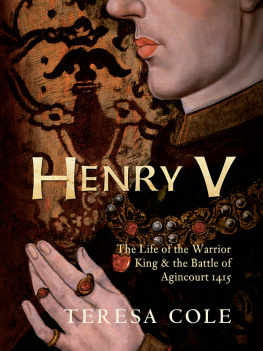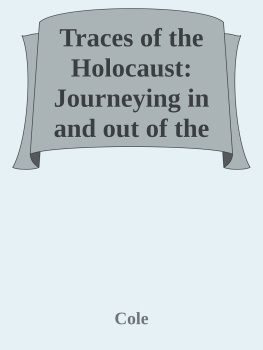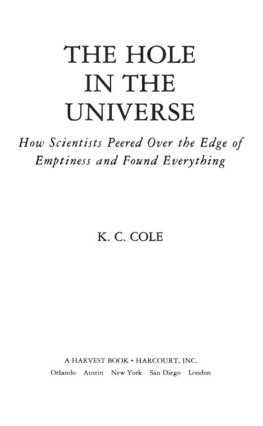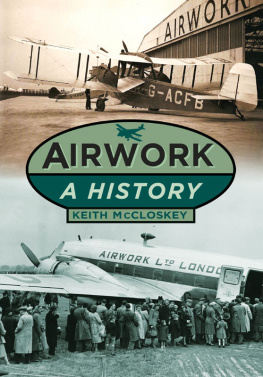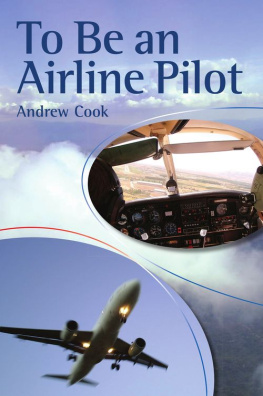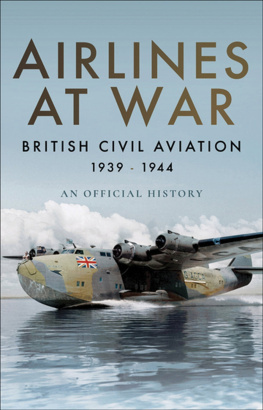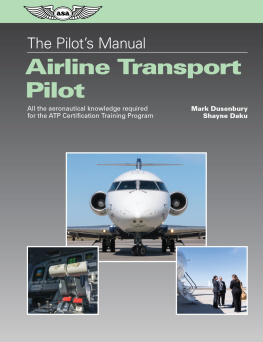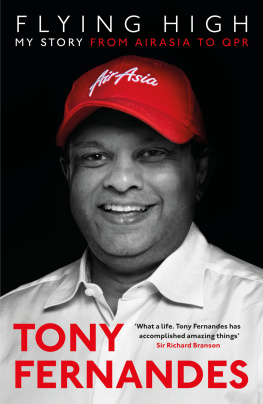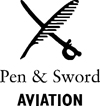
VC10
Dedicated to Sir George Edwards and his band of brothers at Vickers. Long may their excellence and exploits be remembered. Their spirit lives on at the Brooklands Museum. Also to the artist Valerie Shirley (Sale), SWLA, who taught me so much and who loved VC10s.
Also by the Author:
Secret Wings of World War II: Nazi Technology and the Allied Arms Race
Secrets of the Spitfire: The Story of Beverley Shenstone: The Man Who Perfected the Elliptical Wing
Vickers VC10
Saab Cars: The Complete Story
Saab 99 and 900
Citroen: The Complete Story
Long Haul
Heavies
Jetliners
The New Illustrated Encyclopedia of the Automobile
VC10: Icon of the Skies
BOAC, Boeing and a Jet Age Battle
Lance Cole
First published in Great Britain in 2017 by
Pen & Sword Aviation
an imprint of
Pen & Sword Books Ltd
47 Church Street
Barnsley
South Yorkshire
S70 2AS
Copyright Lance Cole 2017
ISBN 978 1 47387 532 6
eISBN 978 1 47387 534 0
Mobi ISBN 978 1 47387 533 3
The right of Lance Cole to be identified as the Author of this Work has been asserted by him in accordance with the Copyright, Designs and Patents Act 1988.
A CIP catalogue record for this book is available from the British Library
All rights reserved. No part of this book may be reproduced or transmitted in any form or by any means, electronic or mechanical including photocopying, recording or by any information storage and retrieval system, without permission from the Publisher in writing.
Pen & Sword Books Ltd incorporates the imprints of Pen & Sword Archaeology, Atlas, Aviation, Battleground, Discovery, Family History, History, Maritime, Military, Naval, Politics, Railways, Select, Transport, True Crime, and Fiction, Frontline Books, Leo Cooper, Praetorian Press, Seaforth Publishing and Wharncliffe.
For a complete list of Pen & Sword titles please contact
PEN & SWORD BOOKS LIMITED
47 Church Street, Barnsley, South Yorkshire, S70 2AS, England
E-mail:
Website: www.pen-and-sword.co.uk
The time will come, when thou shalt lift thine eyes
To watch a long-drawn battle in the skies,
While aged peasants, too amazed for words,
Stare at the flying fleets of wondrous birds.
England, so long the mistress of the sea,
Where winds and waves confess her sovereignty,
Her ancient triumphs yet on high shall bear,
And reign, the sovereign of the conquered air.
Translated excerpt from Grays
Luna Habitabilis (1737)
Acknowledgements
T his book has taken years of research to create and I am indebted to many people. I was fortunate enough to know and be tutored by the great (late) E. Brian Trubshaw EBT and it is to him and his memory that I offer thanks and respect. He kindly wrote some further words for me to include herein. At Brooklands, the Vickers veterans, museum staff and members, have been of great help and kindness and I offer thanks to them. I was lucky enough in earlier days, to talk to Sir George Edwards to whom I, like so many, am indebted.
I would particularly like to thank Jelle Hieminga, the Dutch KLM-trained pilot, engineering graduate and VC10 enthusiast of VC10 website fame, A Little VC10derness ( www.VC10.net ), for his kind sharing of information and perspectives about the VC10. Jelle, a regular supporter at Brooklands Museum, is a true chronicler of the VC10 story in a reliable and detailed perspective and has kindly agreed to some of his content being referenced herein.
Others who have helped with my research and views include: Dr N.A. Barfield, N.W. Boorer, Group Captain John Cunningham, Christopher Orlebar, Ronald Ballantine, Blair Shenstone, Peter J. Davis and Wing Commander Kevin Brookes, as Officer Commanding 101 Squadron. Also, friends at West London Aero Club, the British Airways Archive, Qantas PR, Boeing PR, the RAeS, The Brooklands Museum Trust and Allan Winn and Julian Temple.
A donation from the proceeds of the sales of this book will be made to Brooklands Museum Trust.
Introduction
VC10: An Elegance of Function
The VC10 had to be better than the 707, not just different, and we succeeded that requirement in many ways.
Sir George Edwards, OM, CBE, FRS, FRAeS
T his is the story of not just an airliner, but also the airline industry, an airline and the nation and society it served. The Vickers VC10, the British Overseas Airways Corporation (BOAC), the geopolitical and social history of Great Britain and the British Empire are all interwoven. Other national airlines have served political, as well as passenger needs, but the circumstances surrounding BOAC, the end of an era, and government edict to a national, yet State-supported carrier, are circumstances unique to BOAC and the VC10.
Throw in the legacy of Imperial Airways, the British class system, the remnants of The British Raj, African independence, and a curious narrative of attitude and paradox emerges in this airline and airliner story. Somehow, the VC10 became the culmination of several decades of African and colonial aviation adventure by the British and their airline. For Africa is not just an essential part of the VC10 story, but the origination of it.
The sleek VC10 was not a triumph of form over function, but rather a triumphant engineering-led elegance of function. The VC10s function dictated its form and on the subsonic side of Concorde, that form happened to be the most beautiful airliner ever made. Most people agree with such sentiment. So, reflecting the late Dr Ing. Ferry Porsches wonderful phrase about his cars having elegance of function seems to be a great way of capturing what we are talking about in this aeroplane. And if we are to make an automotive analogy, I suggest that the VC10 would be a V12 Aston Martin; power and handling being to the fore. If the VC10 had been German, it would have, of course, been a Porsche 911 930-series Turbo with everything hung out the back.
There have been many things said about the VC10, its main British civil operator, BOAC, and about the rival 707. Some such tales are lies, some manipulations, and some are stated in truth. Even today, there remain differing versions of certainty. It is vital that a rational and evidence-based opinion is framed. We need to put aside national egos and agendas, and reach a view of the VC10 and the great BOAC battle with the Boeing 707 that understands that we cannot always make direct or fair comparisons between the two competing airframes; because they were designed differently for differing requirements. Boeings 707 was originally smaller, less oceanic-capable, the Vickers VC10 was also originally smaller and not targeted at ocean crossings; both designs grew until they were bigger. One the 707 lacked runway performance by design; the other the VC10 had runway performance, but lacked ultimate ultra-long-range ability at the request of its specified operator.
Many years ago, I wrote a technical history book on the VC10 which was well received by enthusiasts and by the men who made the VC10: I tried to pay tribute to their incredible work as best as my then younger mind could. Some readers objected to my claim that if you were to design a specific hot and high, runway dedicated airframe, it still ought to be T-tailed and rear-engined. Critics said that as since the VC10, there have been nothing but conventionally shaped airliners with wing-mounted engines I was wrong. But this was a claim of perceived wisdom, rather than pure fact. For the T-tail and rear-engined layout does remain the choice for regional and business jets needing ultimate performance the Citation X proves the point. Bombardiers CRJ 200, Embraers Phenom, Fokkers 100, Gulfstreams G650, all seem to have proven my clean wing point T-tails and rear engines are still an effective configuration for delivering lift in a specific application. Boeings C17 is T-tailed too, as is the A400M; true, they both have wing-mounted engines but use high wings to avoid the foreign object ingestion problems and roll-angle limitations of low wings with pyloned engines dangling off them a few inches from the ground. So the VC10-type layout is still viable and does have benefits. Oh, and T-tailed, rear-engined 727s and DC9/MD80s (reflecting their manufacturers faith in the configuration) are still flying.
Next page

